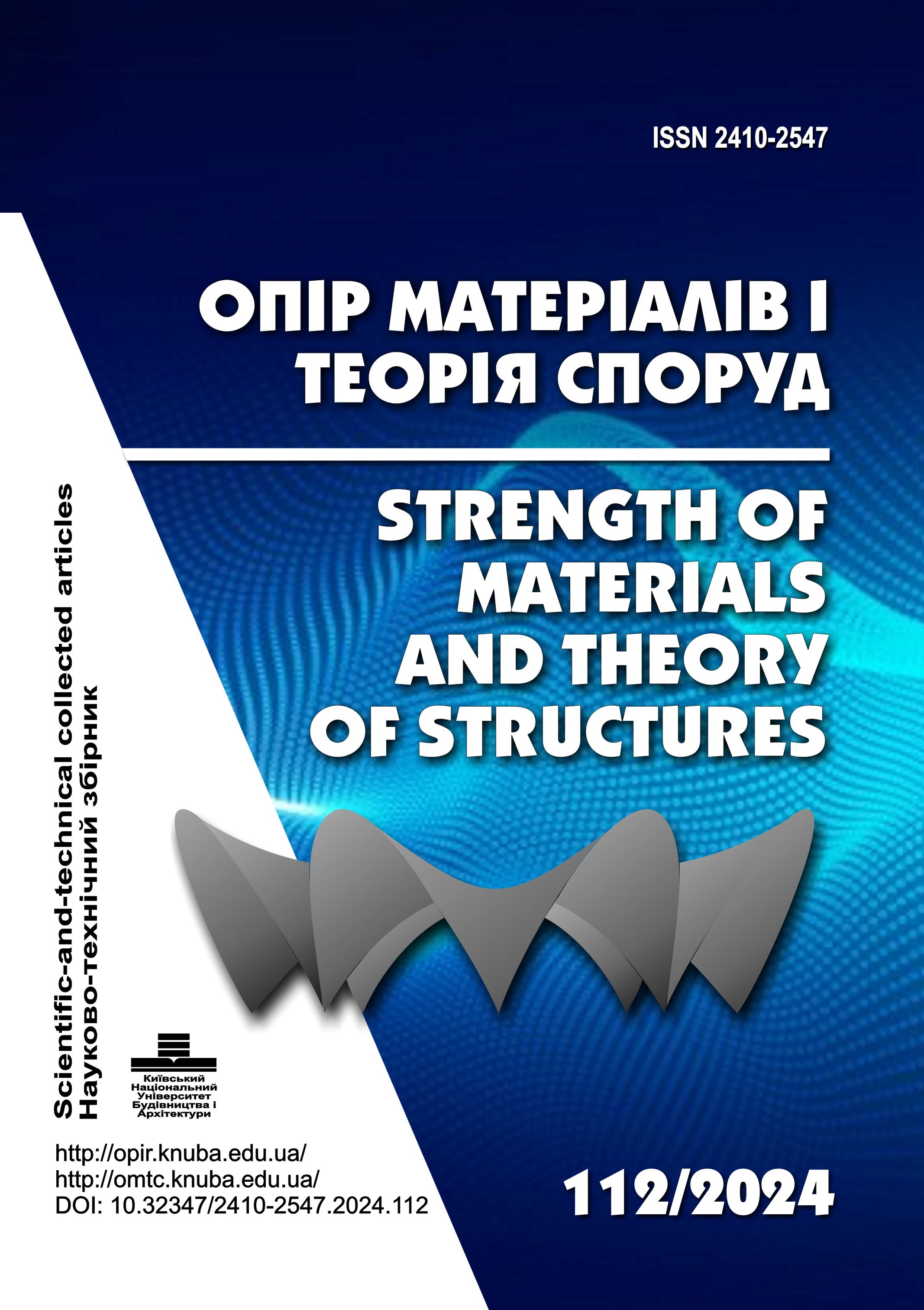Ways of developing assessments of the technical condition of buildings and structures
DOI:
https://doi.org/10.32347/2410-2547.2024.112.28-35Keywords:
technical condition, survey, information uncertainty, level of reliability, riskAbstract
The main differences between the norms for assessing the technical condition of buildings and structures and the norms for their design are analyzed, which are due to different levels of awareness and the degree of uncertainty of the parameters of the structure. It is indicated that the current standards of structural design are not sufficient for assessing the reliability of existing structures, for designing their repair or modernization. Existing design standards do not provide for procedures for assessing the current state of existing structures and the resistance of materials. In addition, they do not deal with the uncertainty of the situation, which is fundamentally different from the design conditions when it comes to the existing structure. During the design of a new structure, the uncertainty of the parameters is taken according to the data averaged for the entire country. But the implemented design is not the average across the country, but is a specific unique structure with characteristics that are refined and, therefore, uncertainties are reduced. It is proposed to take into account the level of knowledge about the technical condition assessment object by using special uncertainty coefficients.
The possibility of applying reduced values of target levels of reliability, the values of which are substantiated by calculations based on the quality of life index, is emphasized. The recommendations of the international standard ISO 13822, regarding the possibility of reducing the target reliability index, were compared with calculations based on the quality of life index LQI, based on Ukrainian statistics.
It is considered appropriate to use new risk-oriented approaches in order to improve the decision-making system for planning the life cycle of construction structures and assessing the residual resource. A list of tasks that need to be solved for this is provided.
References
Aktan A.E. et al: Condition Assessment for Bridge Management // Journal of Infrastructure Systems, 1996, Vol. 2 – pp. 108-117.
Allen D.E. Limit states criteria for structural evaluation of existing buildings // Canadian Journal of Civil Engineering, 1911, 18(6): 995–1004.
DiPascale E., Cakmak A.S, Detection of Seismic Structural Damage using Parameter-Based Global Damage Indices // Probabilistic Engineering Mechanics, 1990, Vol. 5, pp. 60-65;
Ellingwood B.R. Reliability-based condition assessment and LRFD for existing structures // Structural Safety, 1996, 18(2–3): 67–80
.Holický M. Assessment of existing structures // Chapter 9 in Structural Safety and its Quality Assureance. Edited by Bruce R. Ellingwood and Jun Kanda, ASCE, 2005 – pp. 129-145
Holický M (Ed). Basics for assessment of existing structures – Prague: Klokner Institute, 2013, 109 p.
Holicky M. Operational approach to assessment of existing structures // Proceedings, 12th International Conference on Structural Safety & Reliability (ICOSSAR), 6–10 August 2017, Vienna, Austria.
Lüchinger P., Fischer J., Chrysostomou C. et al . New European technical rules for the assessment and retrofitting of existing structures. JRC Science and Policy Report. Luxembourg: Publications Office of the European Union, 2015.
Retief J.V., Viljoen C., Holický M. Standardized basis for assessment of existing structures. // Zingoni, A (Ed) Advances Engineering Materials, Structures and Systems: Innovations, Mechanics and Applications Abingdon, UK: Taylor & Francis, 2019 pp 2120–2125
Steenbergen R., Sýkora M., Diamantidis D., Holický M., Vrouwenvelder T. Economic and human safety reliability levels for existing structures // Structural Concrete, 2015, 16(3): 323–332
Sýkora M., Diamantidis D., Holický M., Jung K. Target reliability for existing structures considering economic and societal aspects // Structure and Infrastructure Engineering, 2017, 13(1): 181–194.
Tanner P., Lara C., Prieto M. Semi-probabilistic models for the assessment of existing concrete structures // Proceedings, 11th International Conference on Applications of Statistics and Probability in Civil Engineering, 1–4 August 2011, Zurich, Switzerland.
Tur V.V., Yalavaya Y.S. Assessment of existing reinforced concrete structures with usage of the fuzzy logic – based expert system // Building and reconstruction. – 2019. – № 5 (85). – P. 74–84.
Tur V.V., Yalavaya Y.S. Expert system for assessment of existing concrete structures // Modern Engineering, 2019, Vol. 2. – P. 61–70.
Vrouwenvelder T., Scholten N. Assessment criteria for existing structures // Structural Engineering International, 2010, 20(1): 62–65
Perelmuter A.V. Pichugin S.F. Some features of calculating the reliability of damaged steel structures // Science and construction, 2023, No. 1(35) C. 15-26.
Barashikov O., Malyshev O. Assessment of the technical condition of buildings and engineering structures - K.: Osnova, 2008. - 320 p.
Usakovsky S.B. Preliminary assessment of the reliability of existing structures based on incomplete data // Urban planning and territorial planning, 2015, Vol. 58. - pp. 525-528
Lantukh-Lyashchenko A.I. Markov model of assessment and forecast of the technical condition of building structures // Roads and Bridges, 2019, Vol. 19-20. - P. 27-37.
DSTU B V.2.6-210:2016 Assessment of the technical condition of steel building structures in use
DSTU 9181:2022. Guidelines for assessing and predicting the technical condition of road bridges
ISO 13822:2010. Basis for design of structures –Assessment of existing structures. – Geneva (Switzerland): ISO, 2010.
ISO 2394: 2015. General principles on reliability of structures – Geneva (Switzerland): ISO, 2015.
EN 1998-3. (2018). Design of structures for earthquake resistance. Part 3: Assessment and retrofitting of buildings. – Brussels (Belgium): CEN, 2018.
Statistical Yearbook of Ukraine for 2020. – Kyiv: State Statistics Service of Ukraine, 2021.
ISO 2394:2015. General principles on reliability of structures. – Geneva (Switzerland) : ISO, 2015.
EN 1991-1-7: Аctions on structures. Рart 1–7: General actions. Accidental actions. – Brussels (Belgium): CEN, 2006.
Downloads
Published
Issue
Section
License

This work is licensed under a Creative Commons Attribution 4.0 International License.
Authors retain copyright and grant the journal right of first publication with the work simultaneously licensed under a Creative Commons Attribution License that allows others to share the work with an acknowledgement of the work's authorship and initial publication in this journal.

